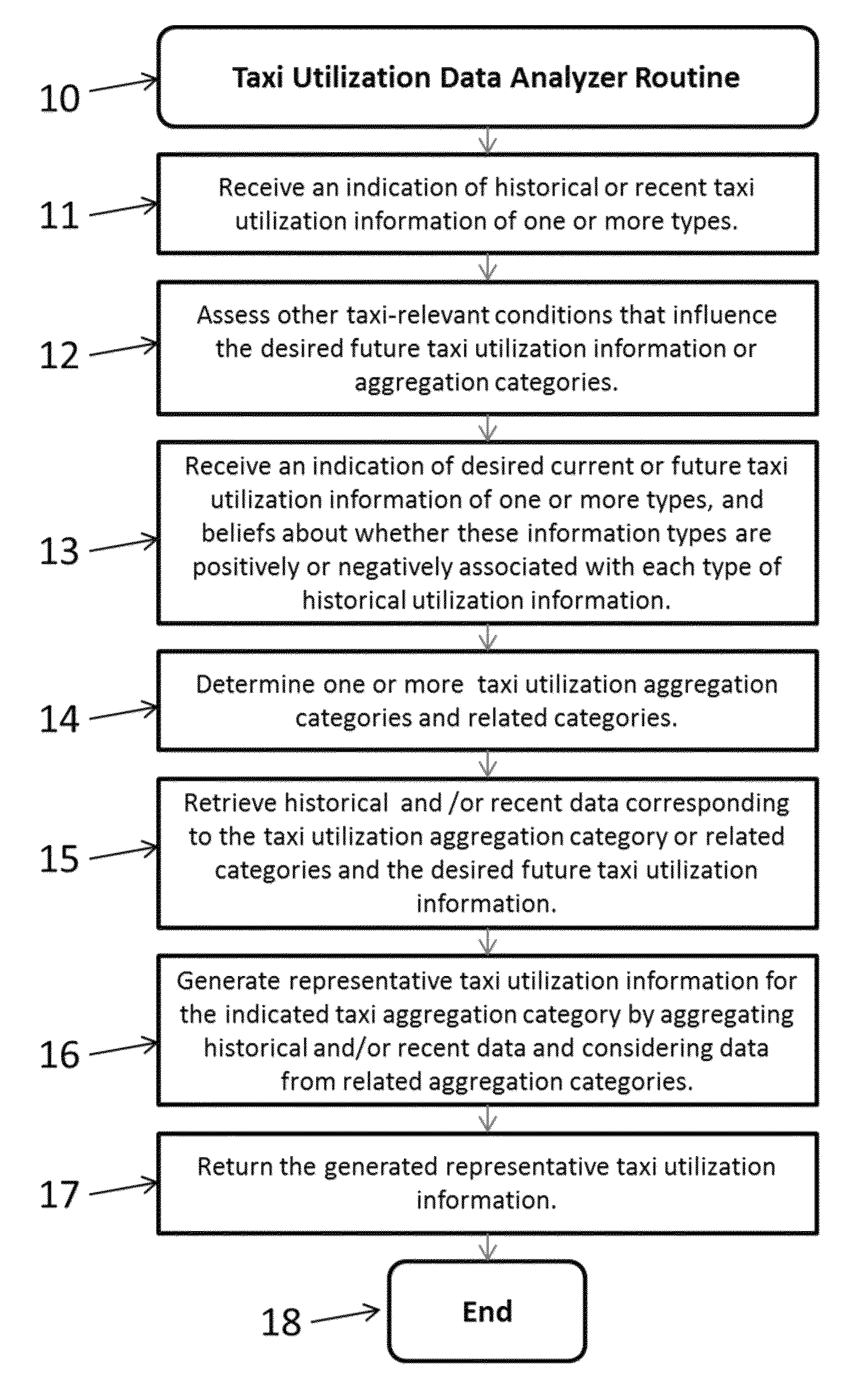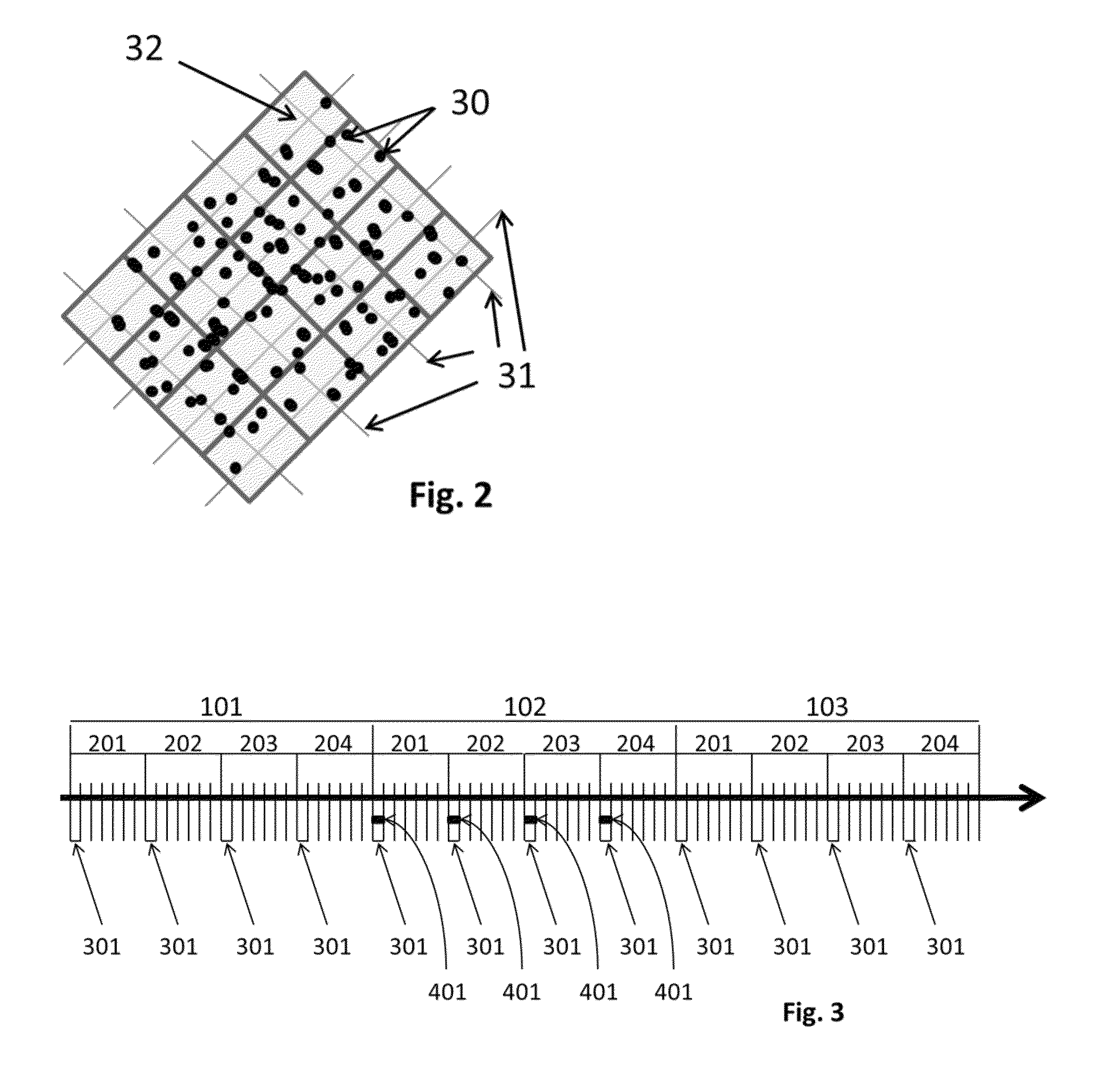Predicting taxi utilization information
a taxi and information technology, applied in the field of data analytics, can solve the problems of high difficulty, many drivers simply stop trying, and competition for passengers
- Summary
- Abstract
- Description
- Claims
- Application Information
AI Technical Summary
Benefits of technology
Problems solved by technology
Method used
Image
Examples
Embodiment Construction
[0008]Referring now to the invention in more detail, techniques are described for analyzing historical and recent information about contingent taxi utilization in order to generate representative information about present or future contingent taxi utilization. FIG. 1 provides an example embodiment of a representative Contingent Taxi Utilization Analyzer Routine and displays how one embodiment of the present invention generates representative information about present or future contingent taxi utilization information by analyzing historical and recent taxi utilization information. As shown in that figure, one embodiment of the present invention can be embodied as seven steps (11-17). This section outlines, in detail, what each step is, how each step is used, how each step can be constructed, and how the steps fit together. It will then discuss advantages of the present invention.
[0009]As used throughout this specification, “taxi utilization information” generally refers to any inform...
PUM
 Login to View More
Login to View More Abstract
Description
Claims
Application Information
 Login to View More
Login to View More - R&D
- Intellectual Property
- Life Sciences
- Materials
- Tech Scout
- Unparalleled Data Quality
- Higher Quality Content
- 60% Fewer Hallucinations
Browse by: Latest US Patents, China's latest patents, Technical Efficacy Thesaurus, Application Domain, Technology Topic, Popular Technical Reports.
© 2025 PatSnap. All rights reserved.Legal|Privacy policy|Modern Slavery Act Transparency Statement|Sitemap|About US| Contact US: help@patsnap.com



